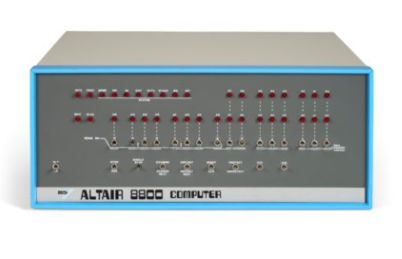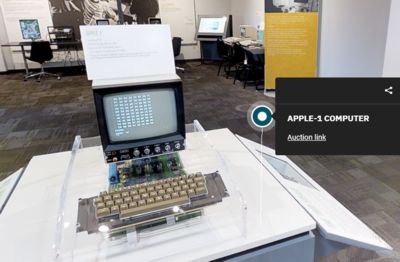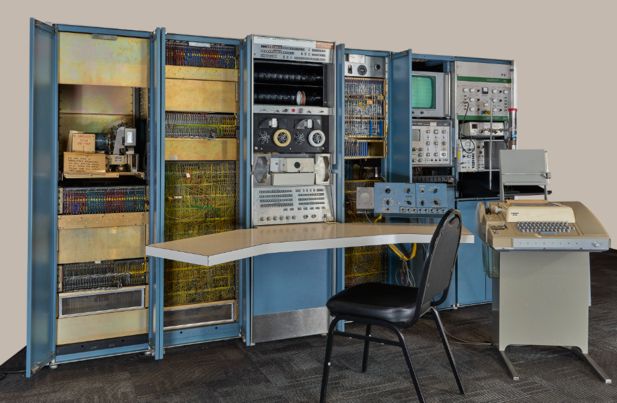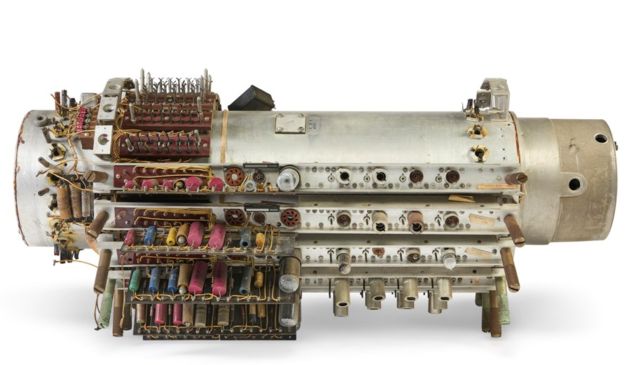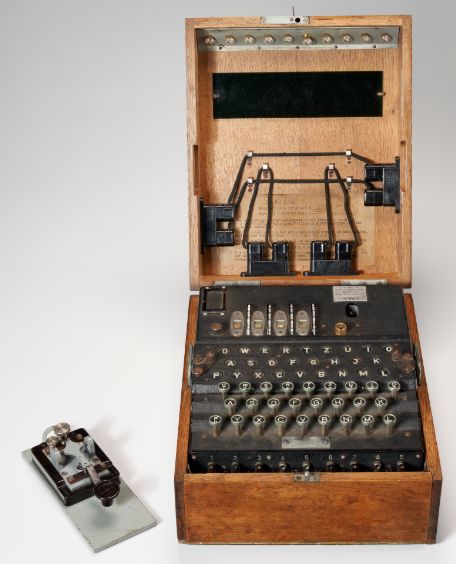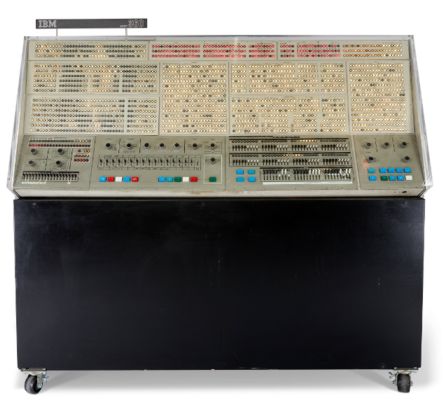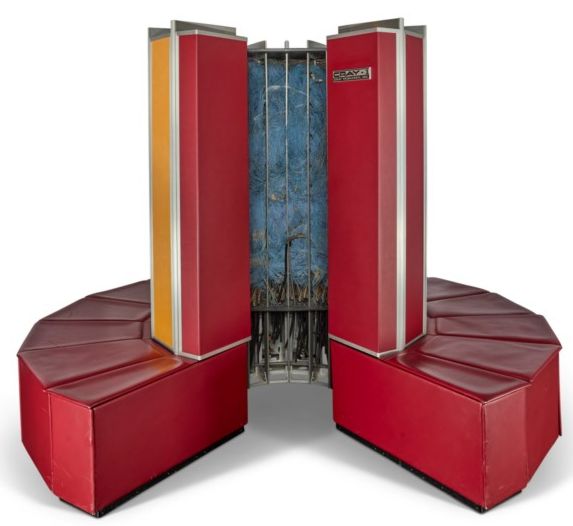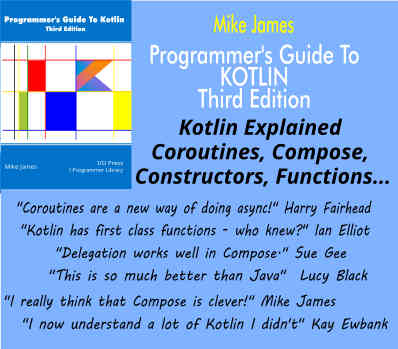| Paul Allen's Historic Computers Under the Hammer |
| Written by Sue Gee | |||
| Wednesday, 04 September 2024 | |||
|
Dozens of rare historic computers are currently up for auction. As well as a room-sized PDP 7, there's an Altair, an Apple I, a Cray I and an Enigma machine on offer to the highest bidder as the private collection of the late Paul Allen, is sold by Christies, New York. As well as being co-founder of Microsoft with Bill Gates, the duo responsible for bringing BASIC to the home computer, specifically the Altair 8800, Paul Allen was an avid collector. During his lifetime he had amassed not only historic computers and notable technology, but also artworks and precious artefacts of all kinds. Allen was also a philanthropist who supported the arts, music, sport, science and technology. After resigning from Microsoft in 1983, he set up Vulcan Inc. in 1986 as an investment and project management firm with his sister, Jody Allen and two years later established the Paul G. Allen Family Foundation to oversee his philanthropic venture. Now, nearly six years after his death in October 2018, from complications of non-Hodgkin’s lymphoma, a disease he was first diagnosed with in 1982, items from his private collection are being sold to further his philanthropic mission. In fact the number of items is so large, so varied and so valuable that Christies has split them across three sales. The collective title for the sales is "Gen One: Innovations from the Paul G. Allen Collection" and expectations are high given that in 2022 a previous auction titled "Visionary: The Paul G. Allen Collection" and comprising 155 art masterpieces achieved $1.62 billion, becoming the most valuable private collection ever to come to auction. The artworks now going on sale are in one of the two online auctions that started on August 23rd and finishes on September 12th. As it's title, "Over the Horizon: Art of the Future from the Paul G. Allen Collection" suggest, works in the 57 lots are devoted to how the future, especially interplanetary travel, was imagined by artists and other thinkers during the 20th century including Chesley Bonestell, Robert McCall, R.C. Swanson, George Gibbs, and Fred Freeman. According to Christies: The artworks in this auction, along with their publication in popular magazines, inspired a generation of explorers, scientists, and aerospace engineers. The concurrent online auction is Firsts: The History of Computing from the Paul G. Allen Collection which Christies claim: presents important milestones in the history of computing, some of which have been preserved in working order The 58 lots in this sale comprises the bulk of the contents of the Living Computers, the Seattle-based museum, which Paul Allen founded in 2012 to display his growing collection of historic computers and have them restored to working order and maintained by a team of engineers. In this video posted by Christies, Stephen Jones, Senior Restoration & Collection Manager, Living Computers sets the scene and introduces some of the historic computers that he used to be responsible for, presenting a timeline that highlights the breakthroughs in technology that the machines represent. As reported in Paul Allen's Living Computer Museum Going, Going, Gone Living Computers had been forced to close to the public by the pandemic 2020. It never re-opened much to the disappointment of those who appreciated Paul Allen's aim of preserving vintage and heritage computers for posterity. One aficionado, Seattle-area tech veteran, Paolo Tosolini, founder of Tosolini Productions, had done a high-tech 3D photo scans of Living Computers and later created a more detailed scan of the first and second floors. Now, using technology from the 3D-capture platform Matterport, interactive “hot spots” have been added to 16 items that are up for auction, including the PDP 7 and the Apple 1 with links to lot details at Chrisitie's. Click on image to go to the Virtual Tour of LCM and see how Paul Allen's collection told the history of computing.
While the online auction a mix of huge and small items, from the PDP 7 to mercury delay line memory from the Remington Rand Univac, the gems of the LMC collection are included in the "live auction, "Pushing Boundaries: Ingenuity from the Paul G. Allen Collection, taking place at Christies Rockefeller Center galleries in New York on September with viewing open from September 6-9. It comprises 36 lots, including Einstein’s letter to President Roosevelt which propelled the US into the nuclear age and crucial artifacts from the Space Race, including astronaut Ed White’s spacesuit cover layer, the pilot’s in-flight logbook from Apollo 8, and an annotated checklist from the first American spacewalk in June 1965. The historic computers included in the sale all have important stories. The MITS Altair 8800 is as Christie's state: The first commercially successful personal computer, which catalysed the microcomputer revolution of the 1970s. More importantly for Paul Allen it was the machine for which he and Bill Gates, when they were 22 and 20 years old respectively, created a BASIC interpreter, to know more about this and how it led to the formation of Microsoft, see articles in our History section. While Apple Is are rare, the one included in the sale, with an estimate of $500,000-800,00 is unique. Around 200 units were originally produced and one of these was retained by the company probably to be used a as demo unit. As explained in the lot details this machine was removed from its place in Jobs’ office in 1985 by Don Hutmacher after Steve Jobs was dismissed from Apple and engineers were allowed to take items from his office. Hutchmacher's Apple security pass is included in the lot. By way of Apple I memorabilia, the auction also includes a lot comprising two typed letters, the first of which dated 5 November 1976, is signed twice by Steve Jobs and has apologetic annotation in his handwriting. Its estimate is $50,000–80,000. There's also an Enigma Machine. We've covered the auction of several of these over the years, seeing them realize from $100,000 upwards. This one is a four-rotor model, manufactured by Heimsoeth & Rinke in 1941 and has an estimate of $250,000-350,000. Another lot that caught my eye is an IBM 360/91 console, which according to Chrisitie's: stands as a testament to the advanced technology of its era, representing the height of the System/360 line and offering a rare glimpse into the computing innovations of the 1960s. Having been owned by Princeton University and exhibited by Walt Disney Picture in Tomorrowland in 2015, this example was restored at Living Computers. Having had new circuitry added, the console: now includes an animated display demonstrating its operation, complete with a playful light show currently programmed where Pac-Man chases a ghost, adding a touch of modern whimsy to its historical significance. Moving forward a decade there is a Cray-1 Supercomputer. Only around 80 units were ever built and this one, Serial Number 12 was purchased in 1981 by the University of Minnesota and was designed to match UMN colors. After being decommissioned it was used as a sales model for Cray Research Inc. Only 17 Cray-1s are thought to survive and this is the first to come to auction with an estimate of USD 150,000 – USD 250,000. There's a decommissioned Cray-2 in the online auction with an estimate of USD 150,000 – USD 250,000, but as yet no bid has yet been placed. One does have to wonder who has deep enough pockets and sufficient spare room to afford to win such an item. Although the computers are indeed important milestones in the history of computing they can also be seen as white elephants - expensive to maintain and a big responsibility due to their rarity. As Stephen Jones points out in the video Living Computers was: "a grand collection of restored machines, some of the most important milestones in the history of computing" which Paul Allen had put together to inspire the next generation of technologists. Even though all the proceeds of the sales are destined for charitable causes, the idea that this collection is being dispersed, with much of it disappearing from public view, comes as a great disappointment to people, including those who had donated their computers to preserve them for posterity and to make them accessible to future generations. More InformationGen One: Innovations from the Paul G. Allen Collection Firsts: The History of Computing from the Paul G. Allen Collection Pushing Boundaries: Ingenuity from the Paul G. Allen Collection Related ArticlesPaul Allen, Co-Founder of Microsoft, Dies Paul Allen's Living Computer Museum Going, Going, Gone Computer History Under the Hammer (2020) Computer history under the hammer (2010) Rare Apple I Available at Auction Unique Apple I Sold At Auction Another Three-Rotor Enigma Machine Up For Auction Rare Three-Rotor Enigma Machine Up For Auction To be informed about new articles on I Programmer, sign up for our weekly newsletter, subscribe to the RSS feed and follow us on Twitter, Facebook or Linkedin.
Comments
or email your comment to: comments@i-programmer.info |
|||
| Last Updated ( Sunday, 08 September 2024 ) |
